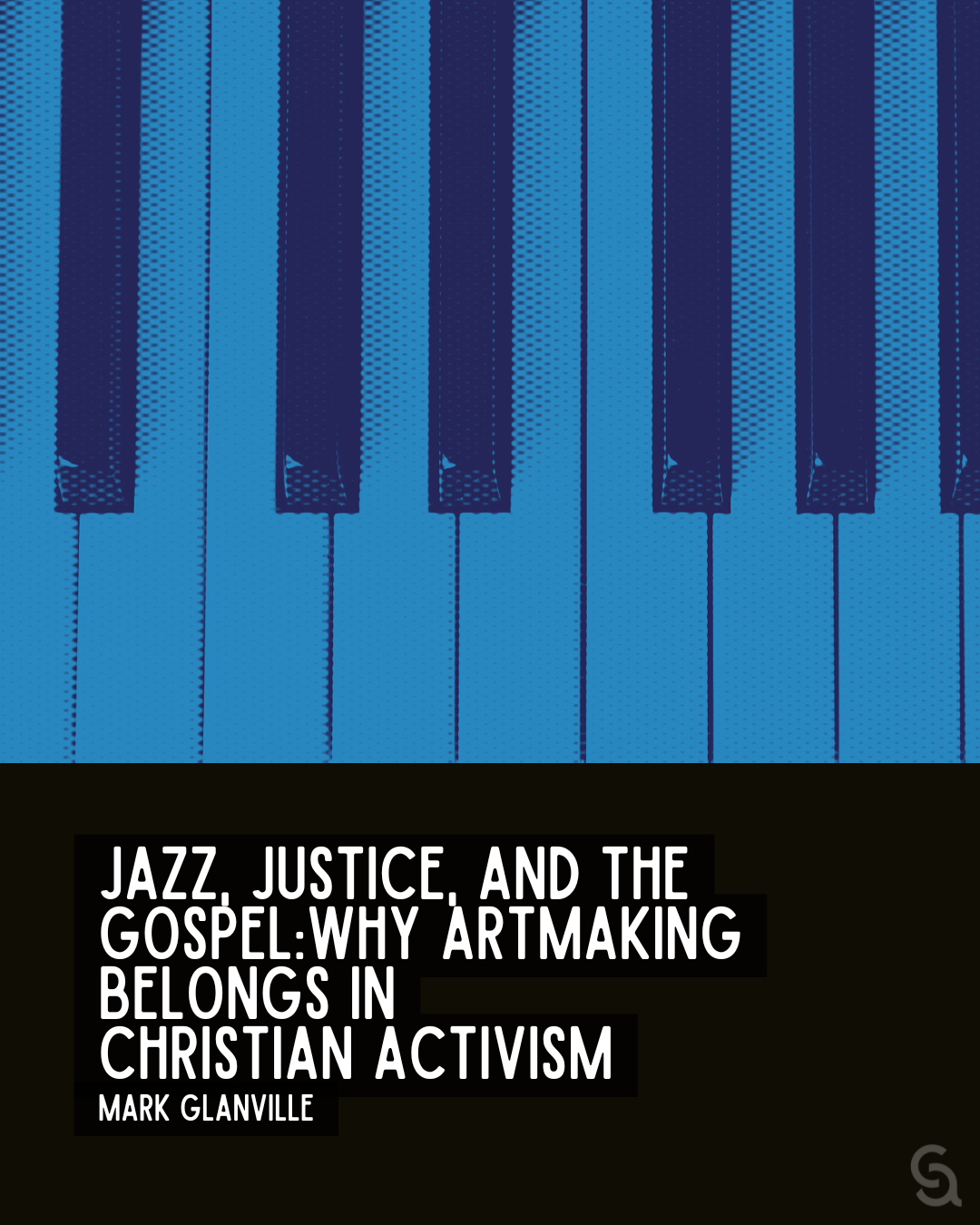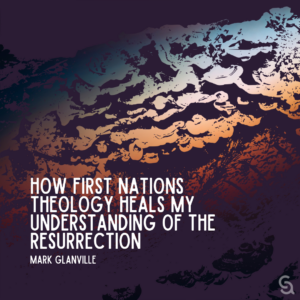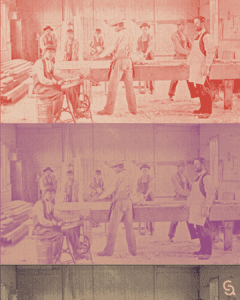 Justice work isn’t just about policy and protest, it’s also about creating beauty. To pursue justice effectively it should include knowing and making with an artistic intuition. There is a woven kinship of artists who are Christ followers: we are they who seek to hear and see clearly. The artistic gift of intuitive discernment, of expressing reality with clarity and soul, surely relates to justice and to the gospel. For a Christ follower enters into the gospel story by discerning the truth about the world—in its beauty and its brokenness.[1]
Justice work isn’t just about policy and protest, it’s also about creating beauty. To pursue justice effectively it should include knowing and making with an artistic intuition. There is a woven kinship of artists who are Christ followers: we are they who seek to hear and see clearly. The artistic gift of intuitive discernment, of expressing reality with clarity and soul, surely relates to justice and to the gospel. For a Christ follower enters into the gospel story by discerning the truth about the world—in its beauty and its brokenness.[1]
Each artist posses a particular way of knowing. Artists know, we perceive reality, with an artistic intuition. (I write as a professional jazz musician and as a biblical scholar.)
Knowing with an Artistic Intuition
What is this way of knowing that artists seem to possess—this artistic intuition? The mystery of art and of the artist’s vocation has to do with an artist’s ability to sense aspects of reality with unusual clarity. An artist’s genius is found not only in technical skill or natural ability (as important as these are), but in their growing ability to sense and discern realities in a way that is beyond capture.
To illustrate, the jazz-inspired poet Micheal O’Siadhail has likened the art of jazz to the improvisation in our lives. O’Siadhail tries to find words for the wrestle of the jazz musician during a performance, with two couplets that I want to focus on here.
Those riffs foregone, adornments you had to eschew,
The siren’s sweetness that wails so deep in you,
Between moments endured and moments of the dream,
Singleness of purpose, utter obedience to a theme.[2]
There are times when we feel like we are wringing music out of a dry rag—these are “moments endured.” Then there are times of electrifying musical conversation, “moments of the dream”—there is nothing like this feeling. Yet whether endured or dream-like, if the music is worth playing, then we are relentlessly pursuing a melody, “a theme.” In order to trace one theme to its conclusion, we must allow 100 musical ideas and opportunities to pass us by—“utter obedience to a theme.”
Those riffs foregone, adornments you had to eschew.
Sometimes the most important creative act is in the decision not to play something.
I wish I could demonstrate this on the piano for you right now! If you want a musical illustration of what I’m talking about, check out my Blue Note Theology podcast.[3]
This is an artistic gift of intuitive discernment, of expressing reality with clarity and soul.
The artistic gift of intuitive discernment, of expressing reality with clarity and soul, surely relates to the gospel. For we enter into the gospel story by discerning the truth about the world: “Blessed are those who mourn” (Matt. 5:4). Disciples learn to see the world how Jesus sees the world, grieving what Christ grieves and celebrating what Christ celebrates. In a similar way, jazz expresses the truth about the world, both in the world’s joys and griefs. Jazz deals with what is, expressing it with tears and offering hope; and the gospel deals with what is, affirming what is good and redeeming what is broken.
So an artist’s work of perceiving creation connects to the gospel, and even expresses the gospel, at least in part. Artists point to the lavish embroidery of creation, to the holes that need mending, and to the detailed work of repair (this is the case whether the artist knows Christ or not). Of course, the artist’s view is distorted, like anyone else’s. And yet there is a woven kinship of artists who are Christ-followers, for we are they who seek to hear clearly, engaged with culture from within culture, and yet marginal in our culture.
Jazz Deals with “What Is”
Yet can we be any more specific about the kind of knowing that jazz (and art in general) invites us into? And do the arts highlight ways of knowing that may, all too often, be neglected? And might the arts alert us to dangers in privileging certain ways of knowing?
Let me nudge at these questions for a minute. Let’s return to Micheal O’Siadhail’s poem, “Flightline.” I love O’Siadhail’s repetition of the concept of “what is.”
At the core of all the jazz’s lavish promise:
Just to keep on playing, to improvise what is. . .
Later in the poem he writes: As if trusting one another we’ll play what we are.
Jazz deals with what is, O’Siadhail is saying. And he isn’t the only one to say this. The master jazz trumpet player Wynton Marsalis, reflected:
“Jazz music is existence music. It doesn’t take you out of the world, it puts you in the world, it makes you deal with it. It not about religiosity, of ‘thou must’—it’s not it’s ‘this is’—it deals with the present. Jazz musicians may have been lying outside drunk, but this doesn’t alter the power of what he’s saying. ‘Yes, I do that, but I also do this.’”[4]
Jazz deals with what is. It discerns the truth about the world: it grieves what is broken in the world and it celebrates life. We might reflect that jazz grieves what Christ grieves, and it celebrates what Christ celebrates.
What About the “Thou Must” Texts in the Old Testament?
A question might come up for you: But what about the “thou must” texts in the Old Testament? For example, what about the Ten Commandments’ “You shall not steal,” and so on?
There is much to say here. (You might like to read my recent article on the Ten Commandments.) The Ten Commandments are “this is” texts in the sense that they grieve what God grieves and celebrate what God celebrates. Set within their narrative context of slave emancipation, the Ten Commandments (and all of the laws of the Old Testament) call us to “see,” “hear,” and “know” the suffering caused by injustice (Exod. 3:7).
And the Ten Commandments call us into a beautiful, shared life!
And think of Jesus! Jesus, the Word, the creator, lives a “this is” life. Think of Jesus’ interactions with people in first century Palestine. My mind goes to Luke 15:1-2: “This man welcomes sinners and eats with them!” By recognizing with “what is,” Jesus gets under our skin and offers us an invitation. He even exorcises the Pharaoh within all of us.
With these reflections, I’m merely gesturing toward a response to the question: Can we be any more specific about the kind of knowing that art invites us into? The example of jazz shows how art highlights ways of knowing that are connected to suffering and justice—ways that are all too often neglected. And, by extension, jazz alerts us to dangers in privileging ways of knowing that are exclusively cognitive and rational, methods that bypass our artistic intuition.
In sum, there is woven kinship of artists who are Christ followers: we are they who seek to hear and see clearly. The artistic gift of intuitive discernment, of expressing reality with clarity and soul, surely relates to the gospel. For a Christ-follower enters into the gospel story by discerning the truth about the world.
[1] This article uses text and ideas from Mark R. Glanville, Improvising Church: Scripture as the Source of Harmony, Rhythm, and Soul (IVP Academic, 2024), 60-74.
[2] Micheal O’Siadhail, “Flightline,” in Our Double Time (Bloodaxe, Newcastle upon Tyne, 1998), 100.
[3] Podcast: Blue Note Theology, ““I Practice Scales to Become a Saint”—Coltrane”
[4] Marsalis
Dr Mark R. Glanville works as Director of the Centre for Missional Leadership, University of British Columbia, Vancouver. Mark has cowritten Refuge Reimagined: Biblical Kinship in Global Politics with Luke Glanville. His most recent book is Preaching in a New Key: Crafting Expository Sermons in Post-Christian Neighborhoods, and he hosts the Blue Note Theology podcast.
works as Director of the Centre for Missional Leadership, University of British Columbia, Vancouver. Mark has cowritten Refuge Reimagined: Biblical Kinship in Global Politics with Luke Glanville. His most recent book is Preaching in a New Key: Crafting Expository Sermons in Post-Christian Neighborhoods, and he hosts the Blue Note Theology podcast.


